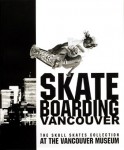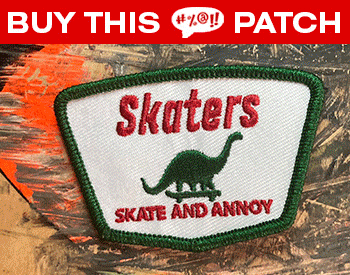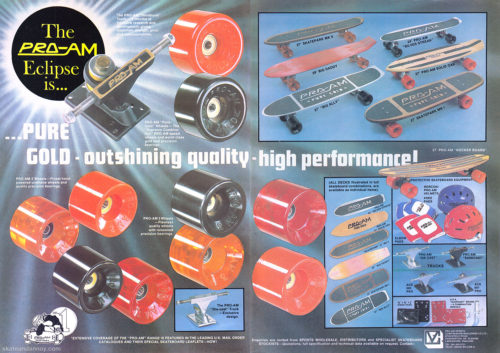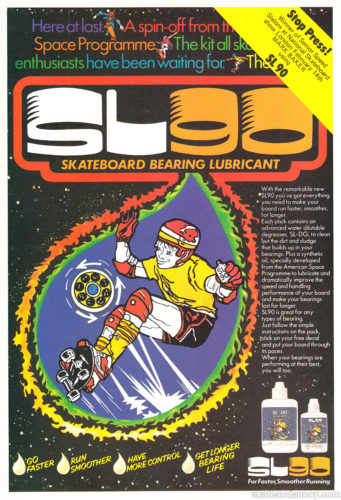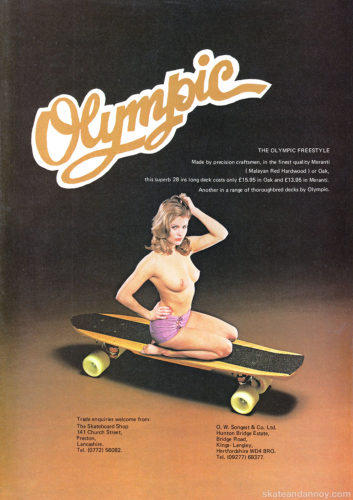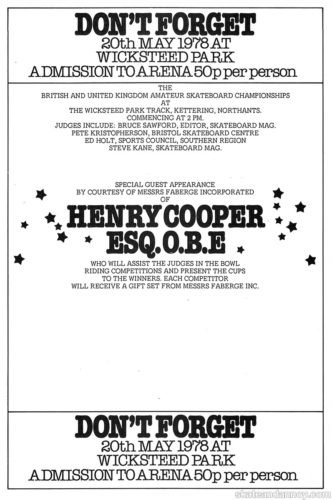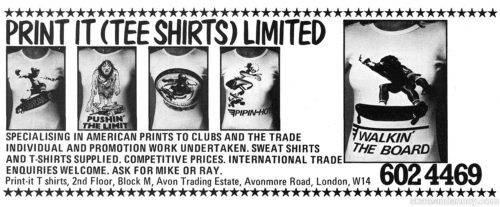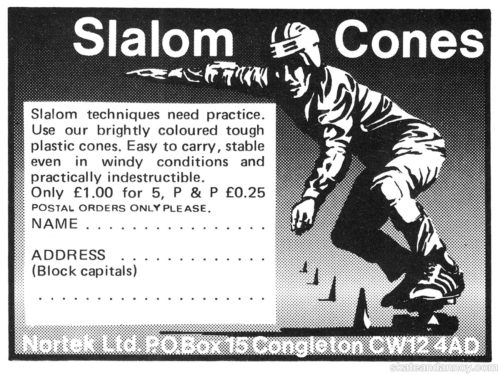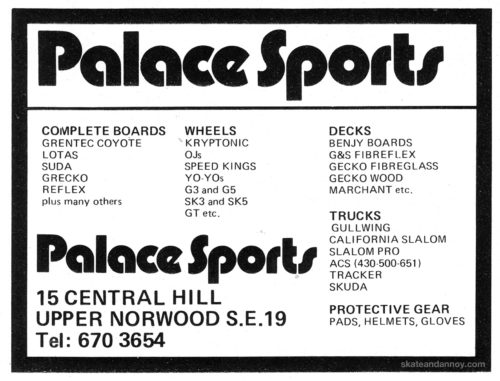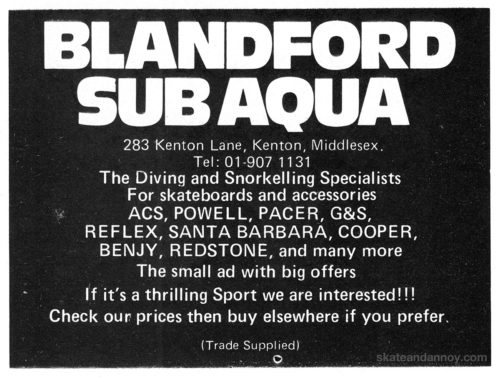Skateboarding Vancouver: The Skull Skates Collection at the Vancouver Museum
ConcreteWave Editions
204 pages perfect bound
9 1/8” x 10 7/8”
ISBN: 0-9735286-5-6
Copyright Date: 2005
Review Date: 9/01/05
For starters, let’s take a minute to let it sink in that the Vancouver Museum actually had the sand to sponsor and carry out what appears to be a first class exhibition on skateboarding. From the looks of the book and the exhibit photos on the Skull Skates web site, this was no hastily compiled cheap effort. Our hats are off to the city and skaters of Vancouver B.C., as well as Skull Skates.
Skateboarding Vancouver is essentially the catalog companion to the 18 month exhibit of the same name hosted by the Vancouver Museum in May 2004. Although covering a rough history of the sport, it is by no means a complete historical reference, nor was intended to be. It’s a documentation of the exhibit and more of a “this is what we’ve got” instead of a timeline/dictionary reference. Skateboarding Vancouver is more akin to Rhyn Noll’s Skateboard Retrospective (albeit with an attitude) than it is to Sean Cliver’s Disposable. With Skull Skates and the Vancouver Museum, you can expect and will get a unique Canadian perspective even though most of it parallels the driving U.S. juggernauts. Skateboarding Vancouver is 204 color pages with a nice layout that is consistent with what you might expect from a Skull Skates project. Boards are presented usually no more than 2 on a page, and each with a short paragraph describing the board, and sometimes the location it was acquired.
Skateboarding Vancouver starts with an introduction by Skull’s own PD, and continues for a couple of pages with some very Steyck-esque ramblings. The collection begins with the usual 20’s and 30’s era steel wheeled scooters, half scooters, and scoot platforms before getting into the roller skate-based and first actual skateboard as we know them models of the 60’s. One rare inclusion for books of this type is the Roller Derby Skate Board Kit, which was basically a skateboard in a box, minus the actual wood, and one of the early examples of purpose-built skateboard trucks. The chronology in this part of Skateboarding Vancouver is a little shaky at times, and best perceived with eyes squinted. One time warping hiccup accompanies a Nash board, saying that although they were crap in the 80’s, “…back in the sixties their stuff was tight.” This is the first instance where the text makes a major break from typical collector and academic speak, but not the last. Mid way through the book the descriptions are occasionally written in the first person, which is confusing at first since there is no author or editor credited to the book, but the obvious assumption is that it’s still PD. Somewhat slightly annoying is the constant reference to board shapes as “template shapes” and some differences of opinion such as a jab at the whole Powell team for not having style and the now obligatory Mike McGill bashing. Hello! Steve Caballero and Lance Mountain ring a bell? Tommy Guerrero anyone? However, all offences can easily be forgiven by the hilarious “gleeful demented wax gnome” comment referencing… well you’ve surely seen them before.
Skateboarding Vancouver continues with breaks for commentary at the beginning of each decade. The seventies through the eighties are the bulk of the book. The Canadian-centric approach is more obvious here. One of the more interesting things is the documentation on the early Skull Skates models and their progression. Skull Skates has had a long and sometimes literally checkered history. There is probably a depth of material available for an interesting Independent-style retrospective of Skull Skates, but the pockets aren’t deep enough and the appeal is not broad enough to finance it, which is a shame.
Getting back to the collection, the 90’s have pretty slim pickings, and the 00’s (?) are still in progress, so there is not much representation. The cohesiveness kind of falls apart at the end, lumping snowboarding, longboarding, and curiously enough, skate-influenced skimboarding together. Yes, skateboard influenced skimboarding does exist! Another feature presented is the 3 most influential skateboarders in Vancouver history. Unfortunately they only get a few pictures and a blink-and-you’ll-miss-it sentence on why they were influential. Skateboarding Vancouver ends unceremoniously with a map depicting the locations of active and defunct skateparks in the Vancouver area.
Although Skateboarding Vancouver has its’ quirks and may not be not super polished from an editorial point of view, it is a highly enjoyable look at skateboard history from a unique point of view. While not a replacement for Disposable or Built to Grind, Skateboarding Vancouver deserves just as much shelf space. Get it while you can. For $25 American or $35 Canadian from TailTap.com or Skull Skates respectively.
Online action: skullskates.com
Online action: tailtap.com

